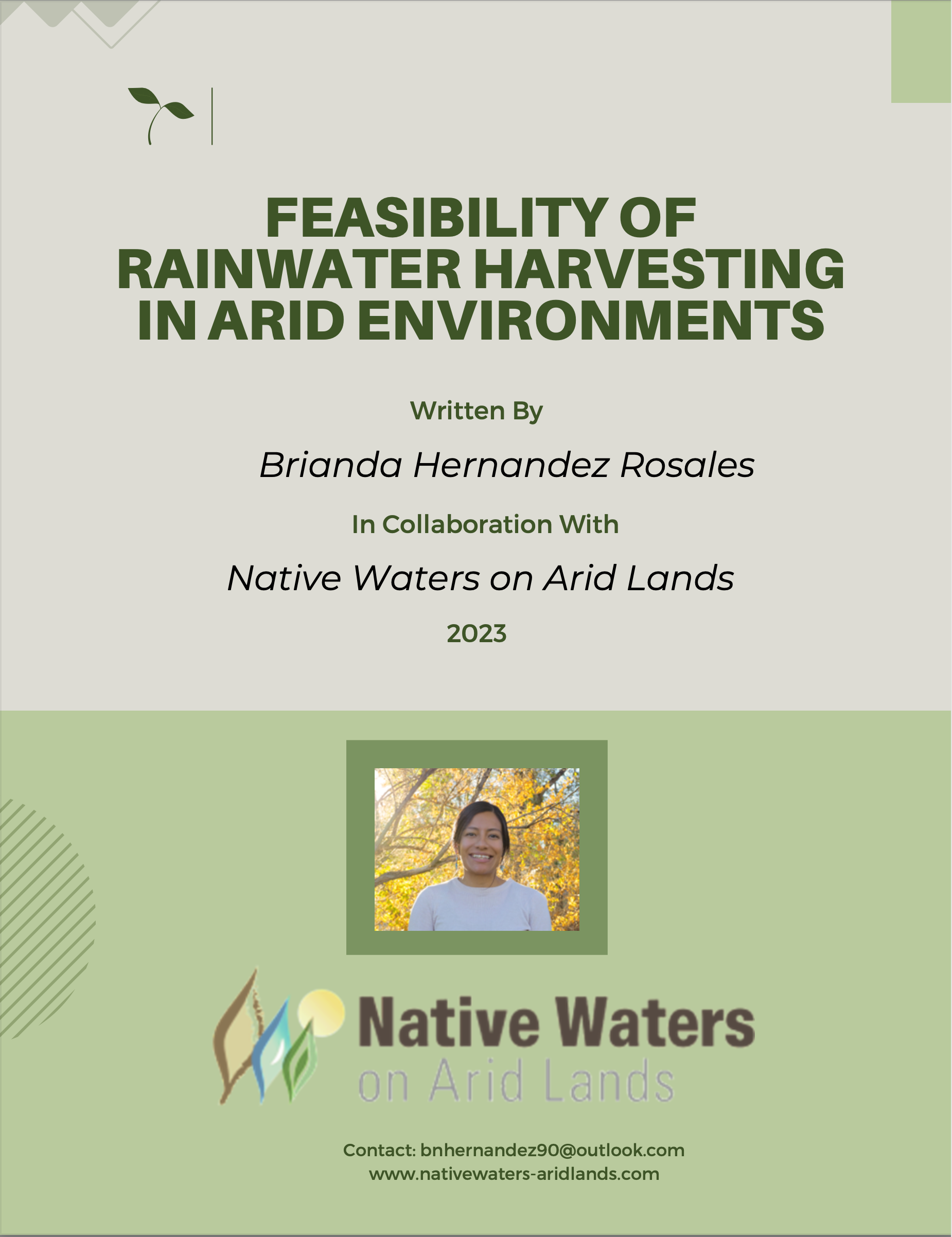Rainwater Harvesting
Information and resources on the feasibility of rainwater harvesting in arid environments.
Rainwater harvesting (RWH), the practice of centralizing, collecting, and storing rainwater for later use, has the potential to help alleviate water stresses in rural and tribal communities in arid and semi-arid environments. In a paper and 6-part video series, Native Waters on Arid Lands researcher Brianda Hernandez Rosales explores the main components needed to determine the feasibility of rainwater harvesting in arid and semi-arid environments. To view the full report, click the PDF link to the right. The video series and powerpoint links are available below.
Thesis
Thesis: Feasibility and Implementation Plan for Rainwater Harvesting in Peach Springs, AZ on the Hualapai Indian Reservation. By Brianda Hernandez Rosales, May 2022.
R Code Repository
Rainwater Harvesting Video Series
PART 1: INTRODUCTION
An introduction to Brianda Hernandez, the rainwater harvesting project, and the outline of the videos.
PART 2: RAINWATER HARVESTING EQUATION
An explanation of how to use a rainwater harvesting equation and publically available datasets to determine how much rainwater can be harvested from a given area.
PART 3: THE AQUACROP MODEL
The AquaCrop Model is a crop growth model that simulates the yield response of crops to water, and helps the user understand how much water is required for their farming needs.
PART 4: THE CULTIVABLE AREA
How to determine how much area can be cultivated, dependant on crop, solely using the captured rainwater, and how much of the crop can be harvested at the end of the growing season.
PART 5: COST AND MAINTENANCE
An overview of how much would it cost to implement and maintain a rainwater harvesting system.
PART 6: RUN-THROUGH EXAMPLE
An example of a rainwater harvesting system that was installed at Peach Springs, AZ on the Hualapai Reservation.
Additional Links and Resources
- Hernandez Rosales, B.; Lutz, A. Assessing the Feasibility of Rooftop Rainwater Harvesting for Food Production in Northwestern Arizona on the Hualapai Indian Reservation. Sustainability 2023, 15, 2891. https://doi.org/10.3390/su15042891
- Come Rain or Shine: Rainwater Harvesting for Food Production in the Face of Drought. DRI blog, April 2023.
- Meet Brianda Hernandez Rosales, Graduate Reseracher. DRI Blog, May 23, 2022.

